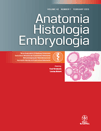
ANATOMIA HISTOLOGIA EMBRYOLOGIA
Scope & Guideline
Illuminating Connections in Anatomy and Embryology
Introduction
Aims and Scopes
- Comparative Anatomy and Morphometry:
The journal emphasizes comparative studies of anatomical structures across different species, utilizing morphometric techniques to analyze variations and adaptations. This includes detailed examinations of skeletal systems, organ structures, and specific anatomical features that highlight evolutionary relationships. - Histological and Ultrastructural Analysis:
A core focus is on histological and ultrastructural investigations, employing advanced microscopy techniques to explore the cellular and tissue-level organization in various organisms. This approach facilitates insights into normal and pathological conditions. - Embryological Development:
The journal covers embryological studies that investigate developmental processes across species, including the impact of environmental factors and genetic influences on growth and differentiation. - Innovative Methodologies:
There is a strong emphasis on the application of innovative methodologies, such as advanced imaging techniques (e.g., MRI, CT scans) and stereological approaches, to enhance the accuracy and depth of anatomical and histological research. - Veterinary and Clinical Relevance:
Many studies aim to bridge the gap between basic anatomical research and clinical applications, contributing to veterinary medicine and animal husbandry by providing insights that can inform surgical practices and treatment protocols.
Trending and Emerging
- Integration of Digital Technologies:
There is a noticeable increase in studies utilizing digital technologies, such as virtual microscopy and computational modeling, to enhance educational practices and research methodologies in anatomy and histology. - Molecular and Immunohistochemical Studies:
Emerging themes include the application of molecular techniques and immunohistochemistry to explore cellular processes and disease mechanisms, reflecting a trend towards understanding anatomy at the molecular level. - Environmental and Ecological Adaptations:
Research focusing on how anatomical structures adapt to environmental changes and ecological niches is gaining traction, particularly in the context of climate change and habitat alterations. - Veterinary Applications and Animal Welfare:
A growing number of studies are focusing on veterinary applications, emphasizing anatomical and histological insights that can improve animal welfare and inform clinical practices. - Comparative Physiology and Function:
There is an emerging trend towards understanding the physiological implications of anatomical structures, with studies linking morphology to functional outcomes in various species.
Declining or Waning
- Traditional Histological Techniques:
There appears to be a decline in papers focused solely on traditional histological techniques, as the field increasingly embraces advanced imaging and molecular techniques for deeper insights into tissue structure and function. - Generalized Anatomical Studies:
Broad anatomical surveys without specific hypotheses or comparative analyses are becoming less common, as the journal shifts towards more targeted studies that address specific research questions or clinical implications. - Single-Species Focus Studies:
Research focused on a single species, without comparative analysis, has decreased. There is a growing trend towards studies that place a species within a broader comparative framework, enhancing the understanding of evolutionary relationships.
Similar Journals

Brain Structure & Function
Connecting Structure to Function in NeuroscienceBrain Structure & Function is a premier peer-reviewed journal published by Springer Heidelberg, focusing on the intricate relationships between brain anatomy and its functional implications. With a significant presence in the academic community, the journal is recognized for its high impact, evidenced by its rankings in the Q1 categories of Anatomy and Histology and its commendable position in the Neuroscience field. It has successfully maintained a convergence of research and innovation from 2007 to 2024, providing critical insights that drive forward our understanding of the brain. The journal's outstanding metrics, including a ranking of #6 in Anatomy and #18 in Histology within Scopus, highlight its role in shaping modern research. Offering open access options, Brain Structure & Function ensures that its cutting-edge findings and methodologies are accessible to a broad audience of researchers, professionals, and students eager to contribute to the evolution of neuroscience. With its comprehensive scope and commitment to high-quality research, this journal is an essential resource for anyone invested in the complexities of brain structure and their functions.
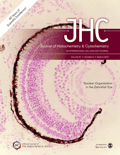
JOURNAL OF HISTOCHEMISTRY & CYTOCHEMISTRY
Unveiling the Intricacies of Histology and AnatomyWelcome to the JOURNAL OF HISTOCHEMISTRY & CYTOCHEMISTRY, a premier platform for the dissemination of cutting-edge research in the fields of anatomy and histology. Published by SAGE PUBLICATIONS LTD, this esteemed journal has been a cornerstone of academic inquiry since its inception in 1953 and continues to play a vital role in advancing our understanding of cellular structure and function. With an impressive Impact Factor reflected in its rank as Q1 in both Anatomy and Histology categories, the journal ranks #5 out of 48 in Medicine Anatomy and #17 out of 62 in Medicine Histology, making it an essential resource for researchers and professionals alike. The journal provides a rigorous peer-review process and encourages submissions that enhance the scientific community's knowledge. As a vital resource for students, professionals, and researchers focusing on histochemical methodologies, the JOURNAL OF HISTOCHEMISTRY & CYTOCHEMISTRY offers insights into the latest advancements and critical debates within this dynamic discipline.

ANATOMICAL SCIENCE INTERNATIONAL
Fostering Excellence in Anatomical Science WorldwideANATOMICAL SCIENCE INTERNATIONAL is a distinguished peer-reviewed journal published by SPRINGER, focusing on the field of anatomy and its applications within the broader spectrum of medical science. With an ISSN of 1447-6959 and an E-ISSN of 1447-073X, this journal provides a robust platform for the dissemination of innovative research and findings from around the globe, featuring studies that span from basic anatomy to advanced clinical applications. As of 2023, it holds a respectable Q2 rank in Anatomy and a Q3 rank in the miscellaneous category of Medicine, reflecting its growing influence and contribution to the field, with Scopus rankings placing it in the 59th percentile of Medicine - Anatomy journals. Although ANATOMICAL SCIENCE INTERNATIONAL is not an Open Access journal, it remains indispensable for researchers, professionals, and students who seek to stay at the forefront of anatomical science research. The journal's ongoing commitment to excellence is evident through its continuous publication, spanning from 2002 and projected through 2024, making it a vital resource for those aiming to advance their knowledge and practice in anatomy.

ZOOMORPHOLOGY
Unraveling the secrets of evolutionary adaptations.ZOOMORPHOLOGY, published by SPRINGER, stands as a pivotal journal in the fields of Animal Science, Zoology, and Developmental Biology. Since its inception in 1980, this journal has been dedicated to advancing the understanding of animal morphology and the evolutionary adaptations of various species. With an ISSN of 0720-213X and an E-ISSN of 1432-234X, ZOOMORPHOLOGY boasts a Q2 ranking in Animal Science and Zoology and is recognized within the Q4 category in Developmental Biology as of 2023, reflecting its impactful contributions to the scientific community. The journal is indexed in Scopus, where it ranks #224 out of 490 in Animal Science and Zoology, and #66 out of 82 in Developmental Biology, positioning it as a resource of considerable significance for researchers and professionals in these disciplines. Although ZOOMORPHOLOGY currently operates on a traditional access model, it continues to foster scholarly communication and inspire future researchers through rigorous peer-reviewed articles that explore the intricate relationships between form and function in the animal kingdom. With a commitment to excellence and innovation, ZOOMORPHOLOGY remains a vital platform for publishing high-quality research that drives forward our knowledge in morphology and evolutionary biology.

HISTOCHEMISTRY AND CELL BIOLOGY
Illuminating the Intricacies of HistochemistryHISTOCHEMISTRY AND CELL BIOLOGY, published by SPRINGER, is a prominent journal dedicated to advancing the fields of histochemistry and cell biology. With an ISSN of 0948-6143 and an E-ISSN of 1432-119X, this journal has carved a significant niche since its inception in 1995, striving for excellence in research dissemination through a rigorous peer-review process. The journal's impact is reflected in its strong performance across various academic categories, achieving a Q1 ranking in Medical Laboratory Technology, Q2 in Histology, and maintaining a credible presence in Cell and Molecular Biology. Nestled in Germany, and with the backing of a reputable publisher, HISTOCHEMISTRY AND CELL BIOLOGY serves as a pivotal platform for researchers, professionals, and students, fostering innovations that push the boundaries of our understanding of cellular processes. While the journal is not open access, it offers subscription-based access options ensuring comprehensive coverage of crucial findings in the rapidly evolving arena of cell biology and histochemistry.
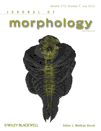
JOURNAL OF MORPHOLOGY
Exploring the Intricacies of Life's FormsEstablished in 1887, the Journal of Morphology is a pioneering publication in the field of morphology, specializing in the anatomical and developmental biology of diverse organisms. Published by Wiley, this journal features high-quality research that spans multiple disciplines, including animal science and zoology, with a current ranking of Q2 in these areas. Although it lacks an open-access option, the journal is committed to advancing knowledge and facilitating scientific communication among professionals in developmental biology, as indicated by its ongoing contributions since its convergence years and up to 2024. With an impact factor that reflects its importance in the scientific community, the Journal of Morphology is a vital resource for researchers, professionals, and students seeking to understand complex morphological processes and their implications in modern science. Its dedication to publishing rigorous, peer-reviewed articles makes it an indispensable asset in the exploration of life's intricacies.
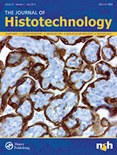
JOURNAL OF HISTOTECHNOLOGY
Unveiling the intricacies of histotechnology research.JOURNAL OF HISTOTECHNOLOGY, published by Taylor & Francis Ltd, is a leading academic journal dedicated to advancing the field of histotechnology, which plays a crucial role in both clinical and research settings. With an established history since 1977, this journal serves as a critical platform for researchers, professionals, and students engaged in the intricate study of tissue processing, staining techniques, and microscopic analysis. It is currently indexed in reputable databases, reflecting its commitment to scientific rigor, with a notable presence in categories such as Anatomy, Histology, and Medical Laboratory Technology. Despite its open access status being limited, the Journal of Histotechnology maintains a respectable impact factor and ranks within the third quartile for Anatomy and Medical Laboratory Technology, and fourth quartile for Histology in 2023, emphasizing its relevance in the scholarly community. As the field continues to evolve, this journal aims to foster innovation and dissemination of knowledge within histotechnology, making it an essential resource for those looking to further their expertise and contribute to the advancements in this vital area of health sciences.
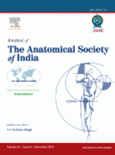
Journal of the Anatomical Society of India
Bridging gaps in scientific understanding of the human body.The Journal of the Anatomical Society of India, established in 1960, is a key publication in the field of anatomy and pathology, published by Wolters Kluwer Medknow Publications. With an ISSN of 0003-2778 and an E-ISSN of 2352-3050, this journal serves as a vital platform for disseminating innovative research and advancements in anatomical sciences. Although it currently features a Q4 ranking in both the categories of Anatomy and Pathology and Forensic Medicine as of 2023, the journal aims to elevate scientific discussions and collaborations among researchers, professionals, and students. The impact factor highlights its relevance in the scientific community, although specific metrics are currently unavailable. Located in the dynamic hub of Mumbai, India, the journal encapsulates a commitment to enriching academic discourse while addressing the latest developments and breakthroughs in the field. Researchers looking for a valued resource within anatomy and related disciplines will find this journal an essential read.
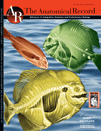
Anatomical Record-Advances in Integrative Anatomy and Evolutionary Biology
Fostering Innovation in Biological Research and Discovery.Anatomical Record-Advances in Integrative Anatomy and Evolutionary Biology, an esteemed journal published by WILEY, serves as a pivotal platform for scholars in the fields of anatomy, biotechnology, ecology, evolutionary biology, and histology. With an ISSN of 1932-8486 and an E-ISSN of 1932-8494, this journal has demonstrated its academic rigor by maintaining a Q2 ranking across multiple relevant categories, including Anatomy and Biotechnology, and consistently achieving a high Scopus ranking in its respective fields. Its scope, covering integrative approaches to anatomical research and evolutionary studies, fosters interdisciplinary collaboration and innovation. Researchers and practitioners can access the journal through various open-access options, ensuring that groundbreaking findings are disseminated widely. As a vital resource for advancing knowledge and exploring emerging trends, this journal greatly contributes to the understanding of biological systems and evolutionary processes, making it an essential read for those dedicated to pushing the boundaries of their respective disciplines.
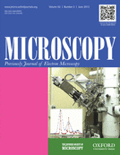
Microscopy
Advancing Microscopy: Where Science Meets PrecisionMicroscopy, published by Oxford University Press, is a prestigious journal dedicated to advancing the field of microscopy and imaging in biological and applied sciences. With a dynamic coverage dating from 1953 to the present, it offers vital insights into the latest techniques and applications across various disciplines, including Instrumentation, Radiology, Nuclear Medicine and Imaging, and Structural Biology. The journal is recognized for its quality, illustrated by its Q2 and Q3 quartile rankings in relevant categories for 2023. Researchers, professionals, and students will find Microscopy an invaluable resource for keeping abreast of contemporary developments and methodologies in the field. As an open-access journal, it promotes equitable access to cutting-edge research and fosters collaboration among the international scientific community, making it essential reading for anyone involved in microscopy research and its applications. For more information, please visit their site for access options and contributions.